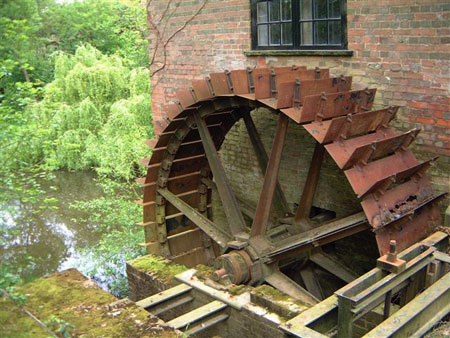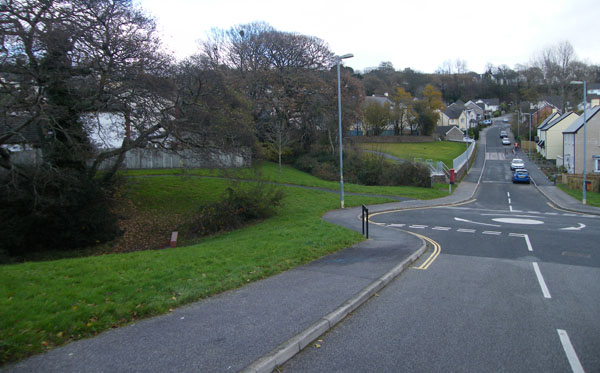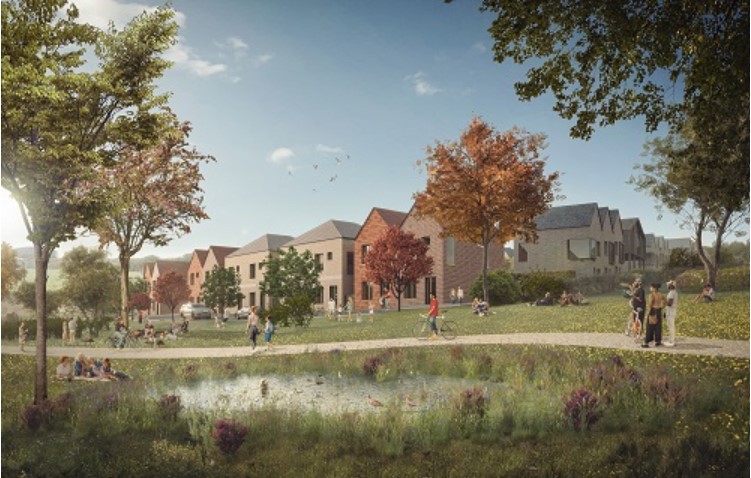Proposed new developments
Truro Football Club
Mrs Carlyon and I visited the exhibition of the proposals which will form a planning application for a retail development. It seeks to provide a number (perhaps as many as nine) middle scale retail units (c7-8000sm), with a car park for between 250 – 300 cars. The buildings will sit low on the brow of the hill , with curved roofs and sedum cladding. The access will be on to the A390 from the existing football club entrance. Meanwhile, the football club is proposing to remove itself to land at Nansavallen Farm, opposite the Calenick turning. This would be below the Tolgarrick development, with an access on to the A39, a key trunk route. It would develop both wetland (the meadows beside the bridge are flood meadows which form part of the protection for Calenick.
Apart from suburbanising yet more of the agri-setting of Truro, this will complicate yet further the southern approach to Truro. The notes to the exhibition suggest that the site could also include a third park and ride facility. The great risk is that, having rendered good green land brown (as the current football ground is described), the embrace of the urban footprint will open up further land towards Kea and Killiow to development. Somewhere, we must call a halt to this, not simply to halt the expansion of the urban area but also in order to safeguard agricultural land. Everybody says the problem is a lack of a Local Plan. I do not see how such a Plan could provide a policy base for curbing this grotesque incursion into the countryside, as the provisional Local Plan is synchronised with the National Planning Policy Framework, which offers no means of halting such an expansion – indeed, it facilitates it.
The conflict between the Local Plan and property developers’ perception of what is required in terms of numbers will dominate the Examination in Public. The developers are attached (naturally) to the figure previously included in the so-called Regional Planning Guidance – they would be – its nearly double that proposed in the Local Plan. If found to be sound, and on-deposit, would the Local Plan provide a defence in Public Inquiries against the absurd five-year-land-supply case when both the Government and Local Authorities have acceded to the hysteria demanding significant increases in housing supply, Governments seem to believe that house building is the key to ‘kick-starting’ the economy, and the commodification of housing means that what determines its provision is not housing need but the potential for returns on investment.
What is lacking is not a Plan, but the articulated and well-supported counter-case – which argues for reducing the pace of development, for the formation of a whole-resource approach to land use planning, for compelling those who misuse housing stock for 2nd homes, holiday lets and town centre offices to be properly taxed and incentivised to return this property to its intended and most useful function. The real land-use issue which is being ignored and undermined is the supply of farmland to meet the need for food – empty bellies make war, even on Persimmon estates!
Willow Green and Maiden Green
Meanwhile, farther along the A390 the saga continues. We now have not simply the complete distraction of those who persist in fuelling the flaccid furore about a stadium, but also one of the developers proposing to divert the homes on their development away from the monopoly sewage system to a breakaway system, with a nearby anaerobic digester providing the means of treatment. So, not only is the entire trunk road network around the outskirts of Truro now at risk of reduced safety and greater congestion as the result of over-development, but the key system by which we manage society’s health is also at risk. If we allow a fragmentation of the monopoly of sewage management then further examples will follow.
It’s no good saying there is no such thing as a precedent – because there most definitely is. The risks involved in allowing this to occur are very high, and will fly in the face of 150 years of dedicated public health research, best practise and outcomes such as extended life expectancy, immeasurably low infant mortality, eradication of epidemic scourges such as cholera, and a quality of life unparalleled in civic society anywhere. As far as I can ascertain there is no example of this sort anywhere else in the UK. I very much resist the campaigning technique of over-egging my argument, so it is with great caution and concern that I raise this.
The Government shifted the Directorate of Public Health into local authorities to enable it to provide a critique across the range of services. Nowhere is this more important than in land-use planning. It is high-time that planners sought the input of the Director of Public Health as a matter of course, and insisted that matters relating to sewage management and water supply are treated as material considerations to be governed by strong planning conditions, with the reservation that failure to comply is strong grounds for refusal of applications.
Eroding the resources necessary for food production, allied to a loss of vital monopolistic control over sewage management, represent key risks to our societal future. The Government and planners must recognise these risks and act to ensure that the future is not compromised by the debt-laden meanderings of a misconstrued economic ‘treatment’ which is what the ‘house-building kick-start’ amounts to.
Tregurra
I went to inspect the archaeological investigations at the Tregurra park and ride/supermarket/housing site consuming 55 acres of Grades 2 &3a agricultural land owned by the Duchy of Cornwall. It is clearly a very significant site, with evidence of Mesolithic activity, Neolithic iron and tin smelting, evidence (previously unknown) of trade in flint – and this is to add to the henge, the mysterious marked disc, the three overlays of field systems and so on. I have in mind a single question:
‘Knowing what we now know, which we would not know unless some development activity had enabled detailed investigation, does what we have found amount to a justification for protecting at least certain key areas of the site, or, indeed, for assessing the archaeological significance of the site against the proposed development and, even at this late stage, calling a halt?’







